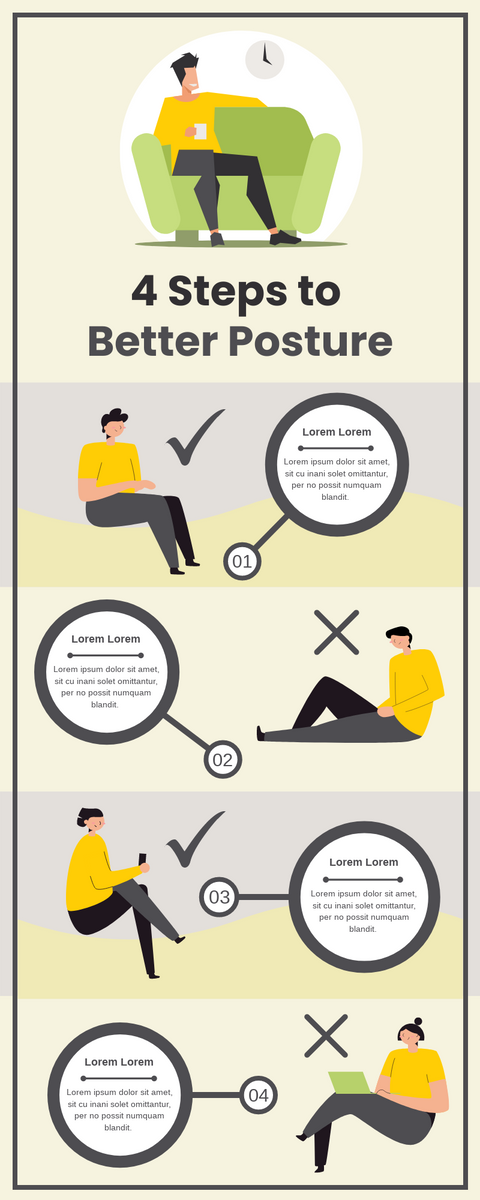4 Steps For Better Posture Infographic
Bad posture can be induced over time by repetitive tasks such as sitting in desk chairs, gazing at the computer, clasping a mobile phone, carrying a bag over the same shoulder, walking, caring for little kids, or even lying down on the bed.
A healthy posture means that all parts of the body conform to the positive amount of gravity and muscle tension. Our daily exercise and activities can affect this alignment, put pressure on joints and muscles, and sometimes cause pain; it may cause damage and leading to degenerative arthritis and joint pain, if it is not controlled in a longer period.
Using proper ergonomics and exercise strategies can help prevent these problems; this also keep bones and joints in the right position, so that our muscles can be used correctly and reduce abnormal wear on the joint surface.
The following guidelines suggest several ways to improve posture and ergonomics, especially for those who sit in an office chair all day:
- Put your feet on the floor, or on the footrest, if they’re not on the floor.
- Don’t cross your legs. Your ankles should be in front of your knees.
- Put your weight mainly on the balls of your feet. Bend your knees slightly. Find the right mattress for you.
- While a firm mattress is generally recommended, some people find that a softer one can ease back pain. Your personal comfort should guide your choices.
- Choose the right pillow, too. Special pillows can help with posture problems caused by poor sleep posture.
- Avoid sleeping on your stomach.


